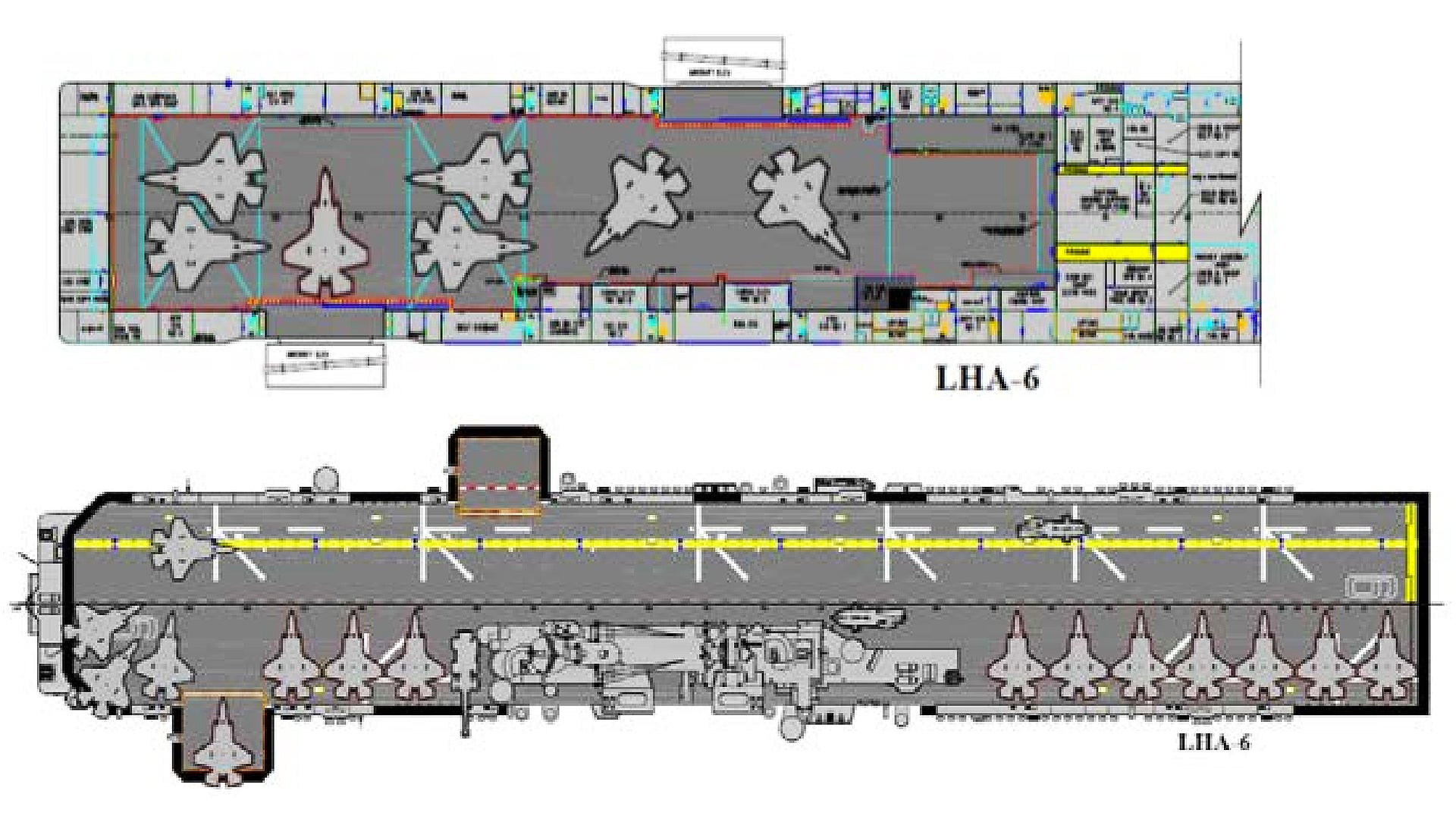The USMC wants to be able to deploy between 16-20 F-35Bs to its amphibious assault ships, turning them into so called “Lightning Carriers” (CV-L). The new America class (LHA-6) flattops, which do not have a well deck and are more focused on aviation capabilities, could field nearly two dozen of the 5th generation jump jets under the concept.
Really, the idea is nothing new. In decades past, “Gator Navy” amphibs were turned into “Harrier Carriers” loaded with dozens of AV-8Bs. This came at the expense of not deploying the usual Air Combat Element dominated by a full range of helicopters. Such a capability begins to encroach on the mission of America’s hugely expensive fixed-wing carrier fleet, although Harriers have operated from these ships in the past as well. And still, the Harrier has limited capabilities compared to what the aircraft from a supercarrier’s Air Wing can provide.
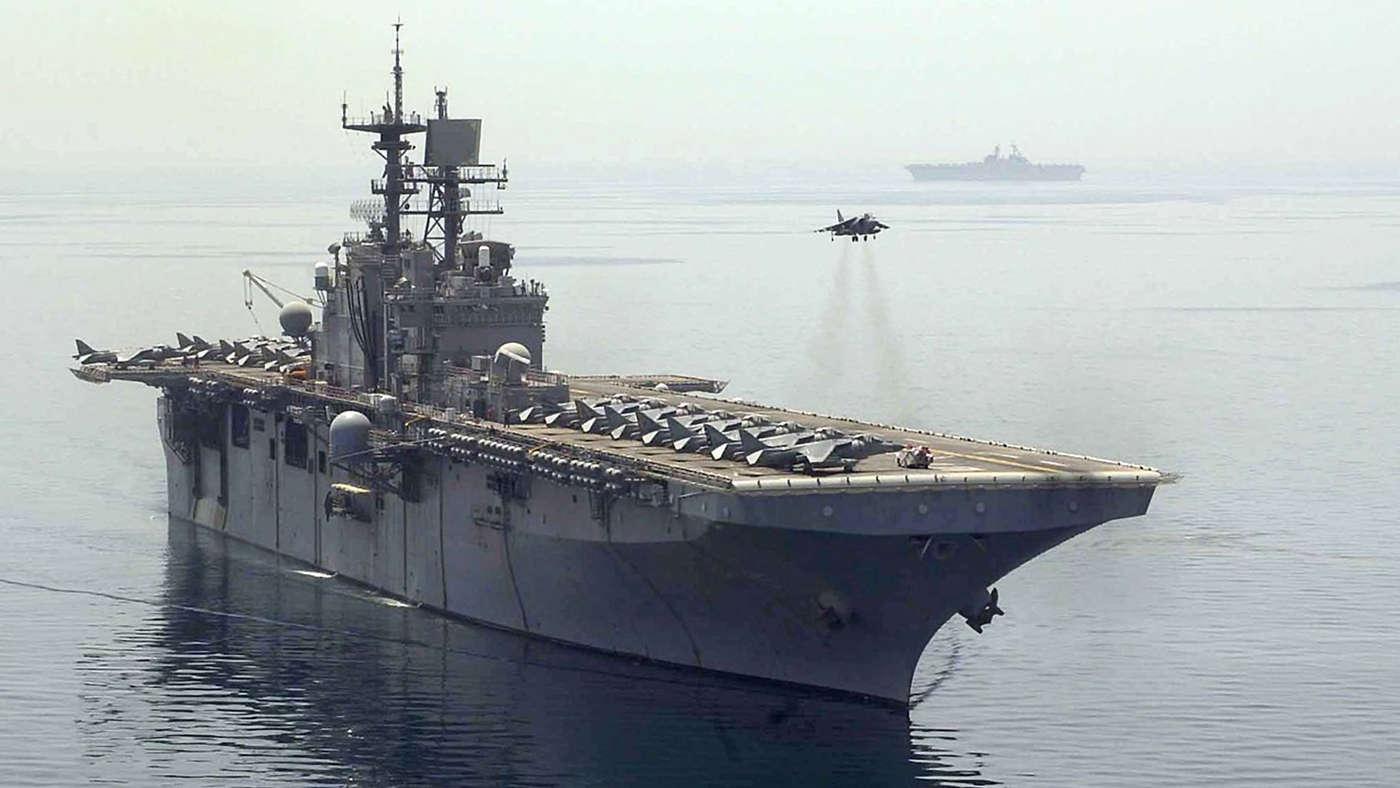
Aside from a reduction in combat radius, the inability to carry 2,000lb class munitions internally and some smaller differences, the F-35B will be just as capable as any fighter flying off the decks of America’s supercarriers, or those on land for that matter. Also, the F-35’s high-end sensor suite and electronic warfare capabilities make it less dependent on Airborne Early Warning and Control and dedicated electronic attack assets in most threat environments compared to its 4th generation fighter counterparts.
In essence, the F-35B is the most relevant of the Joint Strike Fighter family as it gives America’s eight “other carriers”—the amphibious assault ships—a very high-end multi-role fighter capability that can be used on the first day of a major conflict. Under normal circumstances, like its Harrier forbearers, just six to eight F-35Bs will be deployed aboard one of these ships, but under the “Lightning Carrier” concept this is not the case. I went into this reality in great detail years ago in my piece Seven Things The Marines Have To Do To Make The F-35B Worth The Huge Cost (as a side note, it is amazing how many of my recommendations have been satisfied or are in the process of being satisfied). I also discussed how the Harrier Carrier concept could be adapted to the F-35B to great effect, stating:
“During multiple conflicts, these Gator Navy flattops have been used as “Harrier Carriers,” where dozens of the jump jets were packed aboard for sustained operations. The F-35B will make this concept even more relevant with its ability to accomplish a full range of missions, including taking the first shots of a conflict—in effect tearing down the enemy’s surface-to-air missile, aircraft and sensor network barriers so that other, less survivable aircraft can eventually operate over enemy territory in a safer manner.
The new LHA “America” class of amphibious assault ships was built with just this in mind, doing away with the traditional well dock to carry a larger air wing with more fuel and munitions stores. Some concepts exist where a pair of amphibious assault ships work together within a single, albeit larger, Expeditionary Strike Group (ESG). One carrying a couple dozen F-35Bs and the other carrying a few dozen helicopters. Such a concept would allow for a continuous F-35B presence over the battlefield, and would even allow for the ESG to mount fixed wing “alpha strikes,” where the majority of the F-35B force prosecutes a set of strategic enemy targets during a single mission, much like a Navy carrier air wing currently is capable of. An ESG configured in this manner is in many ways even more capable than a nuclear carrier’s deployed air wing as it also retains an incredibly powerful ground assault capability. This ability to “surge” assets and integrate them directly into a single ESG represents a true multirole flotilla, able to flexibly threaten any foe within hundreds of miles of the ocean, not just via air strikes but also via amphibious or inland assaults.
Seeing as the F-35B has the potential to almost double America’s “first day of war” carrier footprint, a great thing during a time when the nuclear carrier force will most likely continue to shrink, and it will allow an ESG to operate much more independently than ever before, the Marines have to look seriously at maximizing this game changing technology.”
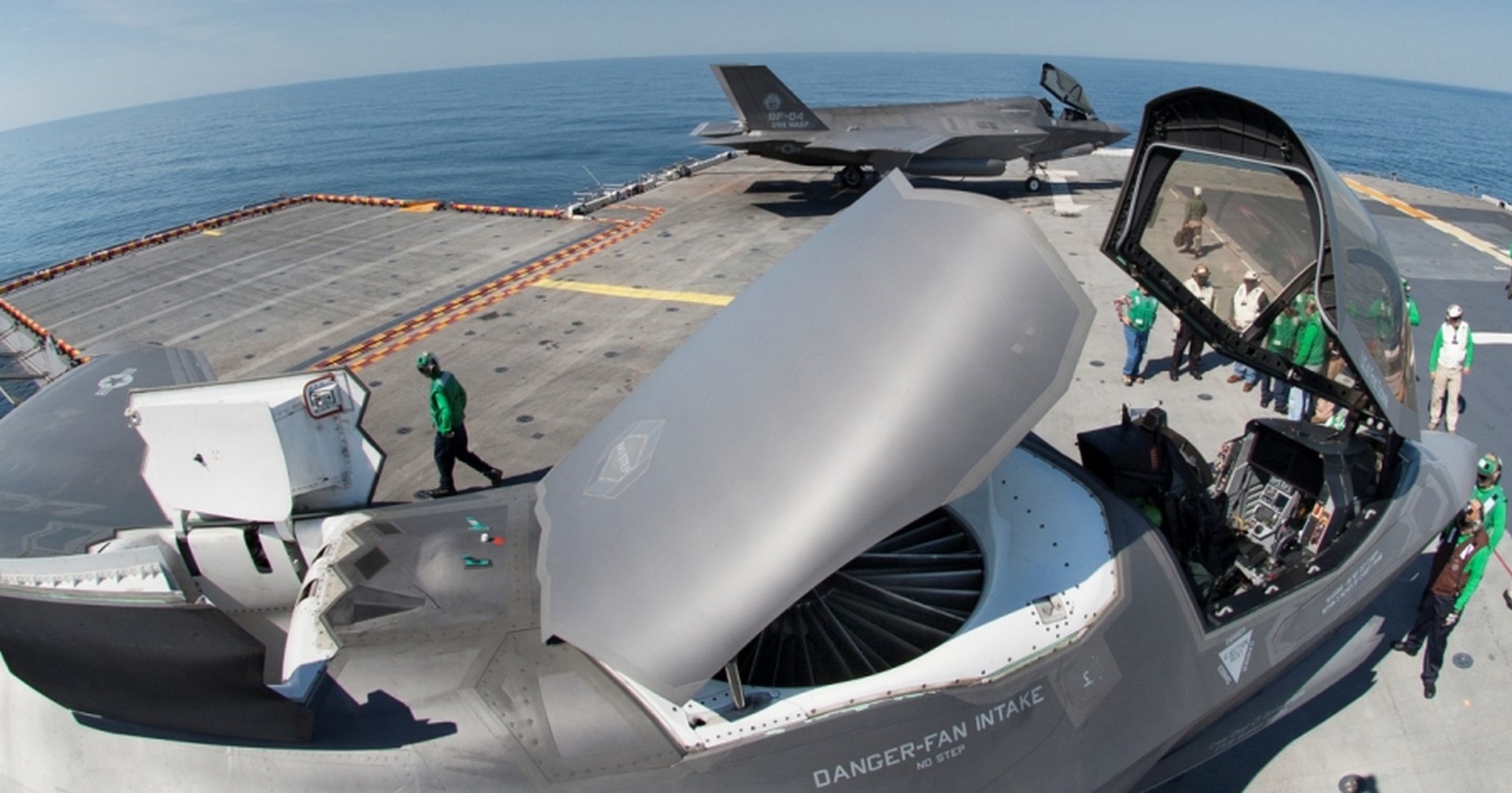
Now, the USMC in its 2017 Marine Aviation Plan seems to agree, stating:
“In the 2017-2027 time frame the Marine Corps will possess the majority of naval 5th generation aircraft. By 2025, the Marine Corps will operate185 F-35Bs—enough to equip all seven L-Class ships. While the amphibious assault ship will never replace the aircraft carrier, it can be complementary, if employed in imaginative ways. The CV-L concept has previous been employed(five times) utilizing AV-8B Harriers in a “Harrier Carrier” concept. TheARG/MEU’s mission, and 13 mission essential tasks (METs), will not change; however, a Lightning Carrier, taking full advantage of the amphibious assault ship as a sea base, can provide the naval and joint force with significant access, collection and strike capabilities.”

The thing is, not only could the Lightning Carrier concept take some pressure off America’s supercarriers, especially for supporting smaller conflicts, but it can also be mixed and matched with different assets, including embedding it into a supercarrier’s own flotilla. In doing so, a Lightning Carrier could drastically augment the 5th generation fighter capacity forward deployed as part of a Carrier Strike Group.
Currently, the Carrier Air Wing of the future is slated to include one F-35C squadron of roughly 12 jets, and possibly two squadrons for most Air Wings as the 2020s roll on. As such, a LHA configured in “Lightning Carrier” mode could nearly triple the amount of F-35s the Carrier Strike Group has to play with. But really where such a concept shines the most is for operations as part of a larger, more capable and operationally independent Expeditionary Strike Group.
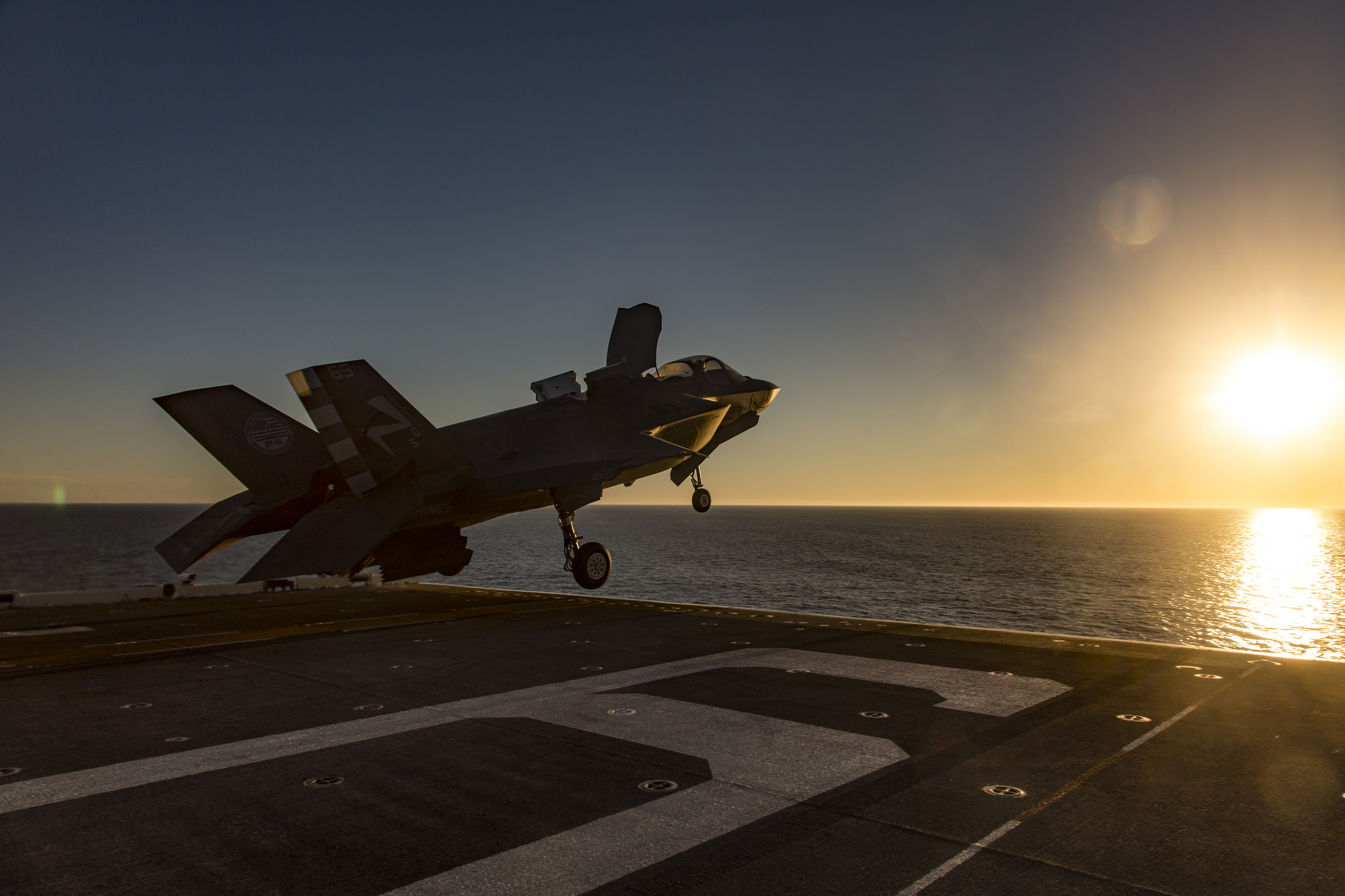
The USMC states that it is likely the Lightning Carrier concept will include a quartet of MV-22 Ospreys equipped as aerial tankers. Although this may take away a small amount of room for F-35Bs, it would be a massive force multiplier, and allow the F-35Bs to fly longer missions and ones that take the jet deeper into enemy territory. It would also add a margin of safety to flight operations and decrease the overall sortie demands on the ship, which are limited compared to their catapult and arresting gear equipped supercarrier counterparts. The V-22 Aerial Refueling System is should hit the fleet within the next year.
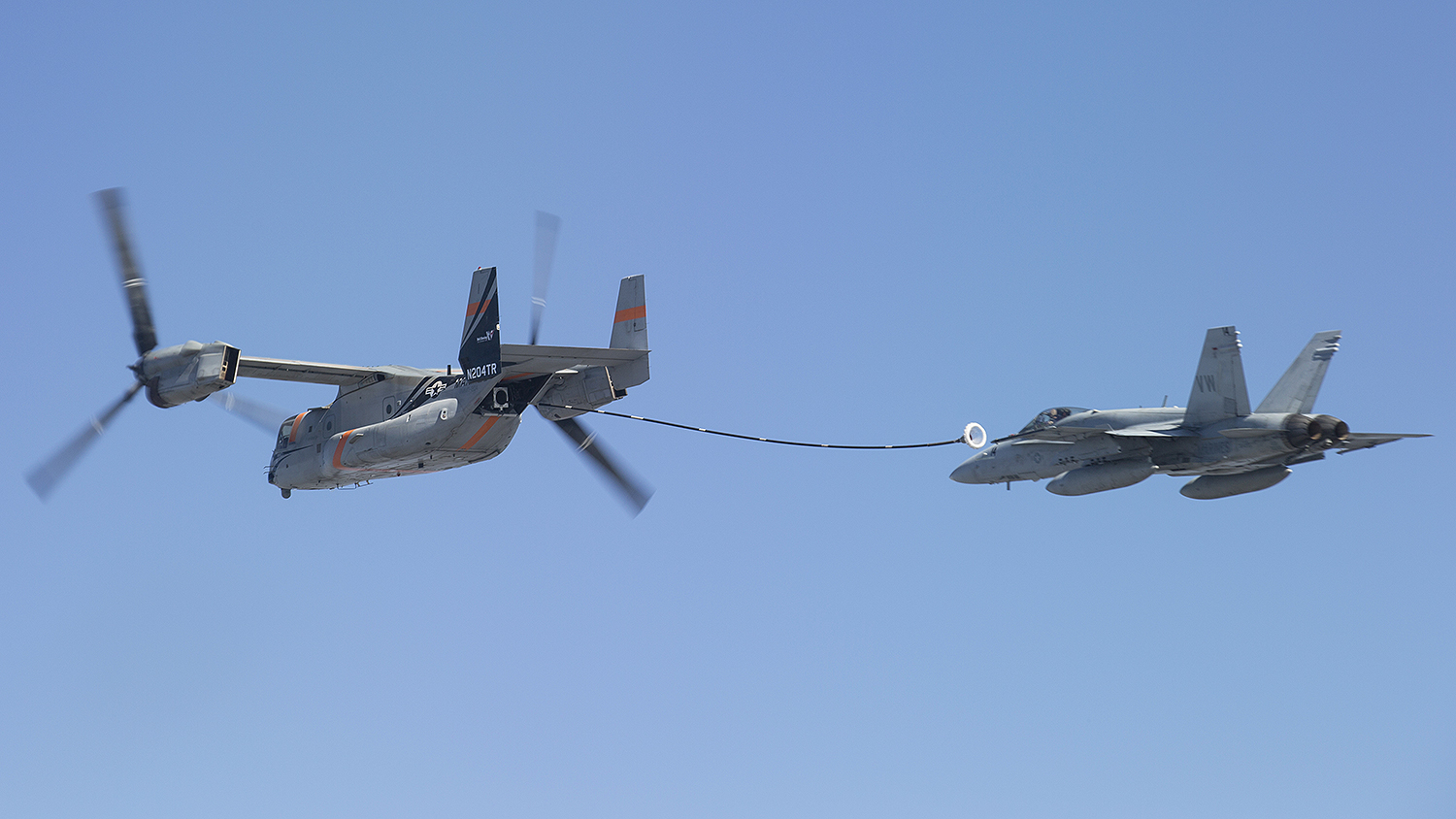
Although the USS America (LHA-6), and to even a greater degree her sister ship, the USS Tripoli, have their decks strengthened and other modifications made to allow them to sustain higher sortie rates of F-35Bs and MV-22s, the existing Wasp class LHDs do not. As such, it is unlikely they could take full advantage of the Lightning Carrier/CV-L concept, at least without more extensive modifications. That’s not to say they cannot carry a full load of F-35Bs, but sustaining continuos flight operations at a very high tempo is likely impossible due to the high thermal loads put out by F-35B, and to some degree the MV-22.
Still, as the Navy struggles with its “carrier gap,” and while some, including the author, have called for building smaller, more flexible and more plentiful aircraft carriers, the America class in particular and the “Lightning Carrier” concept is definitely intriguing.
Contact the author: Tyler@thedrive.com
